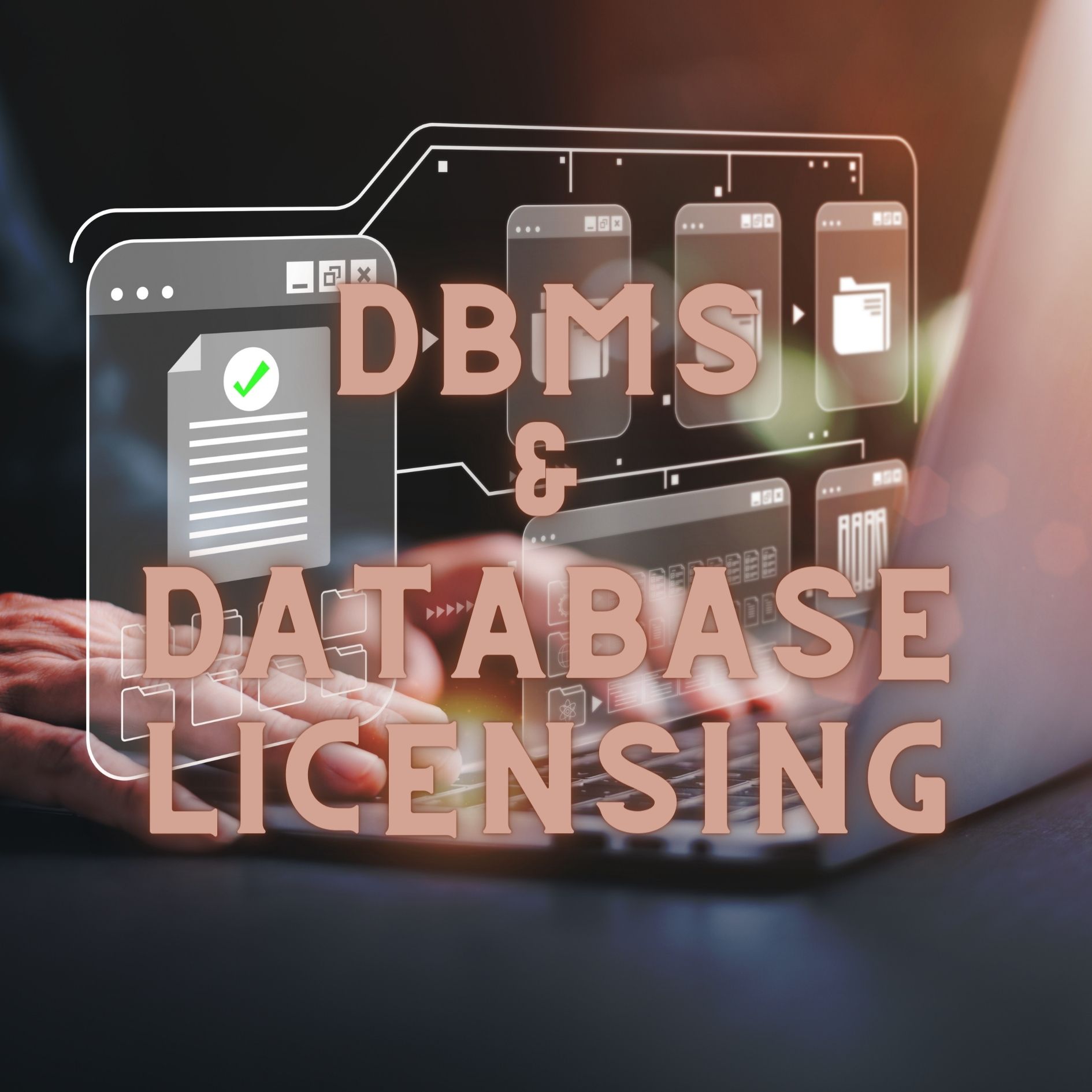Introduction
Organizations rely heavily on databases to store, organize, and manage critical business data, making it essential to have a well-maintained database management system (DBMS). However, database licensing can be challenging, leading to licensing nightmares if not handled correctly. This article aims to help readers understand database licensing and provide practical tips for successful DBMS implementation.
Types of Database Licenses
There are two primary types of database licenses: proprietary and open source. Proprietary licenses are commercial software licenses that grant users the right to use the software for a specified period. In contrast, open-source licenses allow users to use, modify, and distribute the software as they see fit.
Differences between Proprietary and Open-Source Licenses
Proprietary licenses are closed source, meaning users cannot access the source code, resulting in limited customization options and then, on the other hand, open-source licenses provide users access to the source code, allowing for more flexibility and customization options.
The Cost Implications of Different Licensing Options
Proprietary licenses can be expensive, as users must pay for the software license, support, and maintenance. While typically free, open-source licenses may require users to pay for support and maintenance.
The Legal Implications of Licensing
Users must adhere to the terms and conditions of the license agreements they sign when obtaining the software; failure to do so can result in legal action.
Pre-Implementation Preparation
1. Assessing Organization Needs:
Firstly, identify the organization’s specific needs regarding database management and licensing and then, determine the database license type best suits the organization’s requirements.
2. Analyzing the Costs and Benefits of Different Licensing Options:
Secondly, evaluate the costs and benefits of each licensing option. Consider license fees, support and maintenance costs, and customization options.
3. Creating a Licensing Strategy:
Thirdly, develop a licensing strategy that aligns with the organization’s business objectives and technological requirements. Ensure the strategy is flexible enough to accommodate changes in the organization’s direction or technological advances.
4. Developing and Adhering to Licensing Policies:
Finally, establish a clear licensing policy that outlines the organization’s licensing requirements and procedures. Ensure that employees know the policy and understand the implications of non-compliance.
Database Implementation
1. Installation and Configuration:
Firstly, install and configure the DBMS, ensuring it aligns with the organization’s requirements. Customize the DBMS to meet the organization’s needs.
2. Database Optimization:
Secondly, optimize the database to ensure that it runs efficiently and effectively. Improving query performance and optimizing the use of system resources can enhance the DBMS’s functionality.
3. Security and Performance Optimization:
Thirdly, implement robust security measures to ensure that the database is secure. Implement measures to monitor database performance and detect and correct real-time errors.
Post-Implementation Management
1. License Compliance Checks:
Firstly, regularly conduct license compliance checks to ensure the organization adheres to the licensing requirements. Conduct periodic audits of the DBMS to detect non-compliance issues.
2. License Monitoring and Management:
secondly, monitor licenses to ensure they are being used effectively—re-negotiate licenses to align with changing organizational needs.
3. Best Practices for Avoiding Costly Non-Compliance Penalties:
Thirdly, implement best practices to avoid costly non-compliance penalties. Keep accurate records of license usage and ensure that employees know and follow licensing policies and procedures.
4. Effective License Renewal Management:
Finally, manage license renewals to ensure that licenses remain current. Establish a process for renewals, including reminders and notifications.
Strategies for Choosing the Right License
1. Reviewing Licensing Agreements:
Carefully review licensing agreements and understand the implications of the terms and conditions.
2. Obtaining Legal Advice:
Seek legal advice when acquiring or reviewing licenses. Legal experts can provide valuable insights into licensing agreements and potential legal risks.
3. Performing Due Diligence:
Perform due diligence when selecting a DBMS and licensing options. Gain valuable insights and expert guidance by conducting thorough research and consulting with industry experts, enabling you to make well-informed decisions.
4. Aligning with Business Goals:
Ensure the licensing strategy aligns with the organization’s business goals and objectives.
Benefits of Proper Database Licensing
1. Protection of Intellectual Property:
Firstly, proper database licensing protects intellectual property rights, ensuring the organization’s proprietary data is not misused or stolen.
2. Improved Operational Efficiency:
Secondly, a well-maintained DBMS can boost operational efficiency by streamlining data storage and access, reducing retrieval time, and enabling real-time data analysis.
3. Reduced License Costs:
Thirdly, effective database licensing can reduce license costs by selecting the best options for the organization’s needs.
4. Avoidance of Non-Compliance Penalties:
Fourthly, proper DBMS licensing helps avoid costly non-compliance penalties, which can damage the organization’s reputation and result in legal action.
5. Enhanced Security and Management:
Finally, effective database licensing helps improve the security and management of critical organizational data, ensuring that the data is protected from unauthorized access or breach.
Common Challenges in Database Licensing
1. Unclear Licensing Terms and Conditions:
Unclear licensing terms and conditions can create confusion and misinterpretation, leading to licensing issues.
2. Misunderstandings and Miscommunications with Vendors:
Poor communication with software vendors can result in costly mistakes, poor decision-making, and licensing non-compliance.
3. Change of Technology:
Advances in technology can render current licensing strategies and policies obsolete, requiring changes to be made.
4. Lack of Comprehensive Licensing Policies and Management:
Inadequate licensing policies and management can result in inefficient use of licensing resources, leading to unnecessary costs and compliance issues.
Best Practices for Successful Database Management System Implementation
1. Ensure Clear Licensing Policies and Procedures:
Firstly, establish clear licensing policies and procedures that align with the organization’s goals and objectives.
2. Collaborative Decision-Making with Legal, IT, and Procurement Teams:
Secondly, involve legal, IT, and procurement teams in decision-making to ensure that all perspectives are considered.
3. Make Informed Decisions Based on Operational and Business Priorities:
Thirdly, make decisions based on operational and business priorities, ensuring that licensing options align with the organization’s goals.
4. Keep Up-to-Date with Industry Developments and Licensing Requirements:
Fourthly, stay informed of industry developments and licensing requirements to ensure the licensing strategy remains relevant and up-to-date.
5. Establish Effective Change Management Strategies:
Finally, establish effective change management strategies to handle changes in licensing requirements and policies.
Addressing Common Licensing Agreement Misunderstandings
1. Automatic Renewals and Contract Terms:
Understand automatic renewals and contract terms, ensuring that the organization knows the implications of such clauses.
2. Understanding Licensing Models:
Understand the various licensing models available and how they work to ensure the organization selects the best option.
3. Managing Licensing Audits and Allegations of Non-Compliance:
Proactively manage licensing audits and allegations of non-compliance by maintaining accurate records and establishing clear policies.
4. Minimizing Application Cost of Use (ACU) Costs:
Minimize ACU costs by selecting licensing options that are the most cost-effective and align with the organization’s goals.
Commonly Asked Questions About Database Licensing
1. What is Database Licensing?
Ans- Database licensing is acquiring a license to use database software through proprietary or open-source licensing options.
2. What are the Different Types of Database Licenses?
Ans- The two primary types of database licenses are proprietary and open-source.
3. What are the Risks Associated with Non-Compliance?
Ans- Non-compliance with licensing requirements can result in legal action, loss of intellectual property, reduced operational efficiency, and financial penalties.
4. What are the Benefits of Using Open-Source Licenses?
Ans- Open-source licenses provide users with more flexibility and customization options and are typically more cost-effective.
5. How Can I Tell if I’m Complying with Licensing Regulations?
Ans- Perform regular license compliance checks, maintain accurate records, and establish clear policies to ensure the organization complies with licensing regulations.
Summary
Proper database management and then, licensing are essential for organizations that rely on critical business data. Although, this article has highlighted the importance of database licensing, strategies for choosing the proper license, and ways to avoid licensing nightmares. It also provided practical tips for successful DBMS implementation and addressed common misunderstandings of licensing agreements.
Conclusion
Implementing effective database licensing strategies is critical to successful DBMS implementation. Besides, organizations must ensure that their licensing policies align with their business objectives and collaborate with various teams to make informed decisions. In Addition, by implementing the recommendations provided in this article, organizations can avoid licensing nightmares and ensure that their DBMS operates effectively and efficiently.
Visit our website to know more!
Follow us on LinkedIn:


